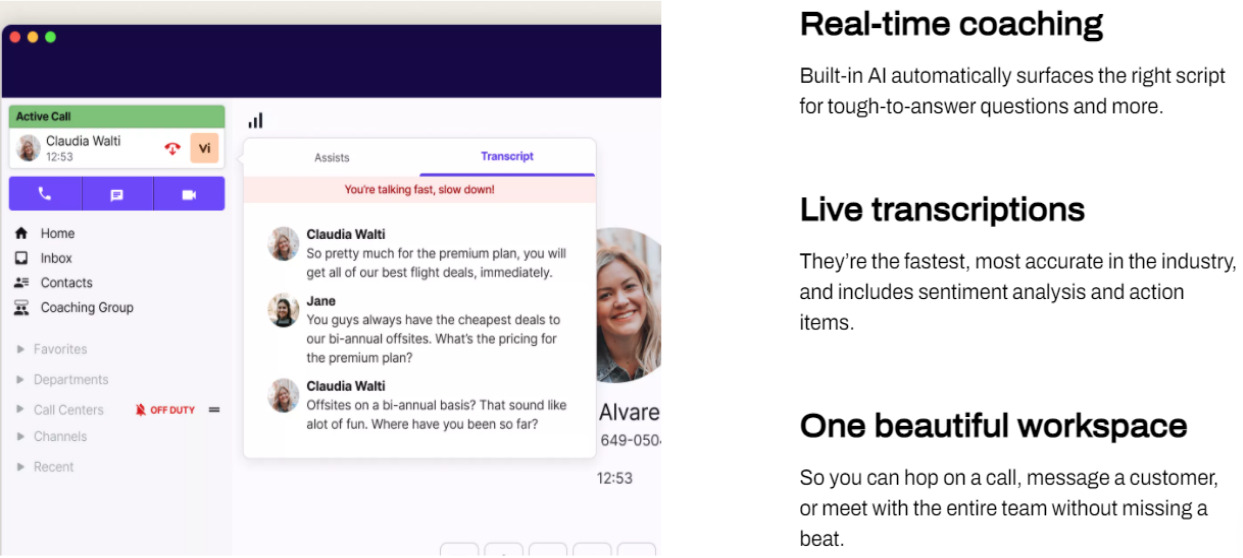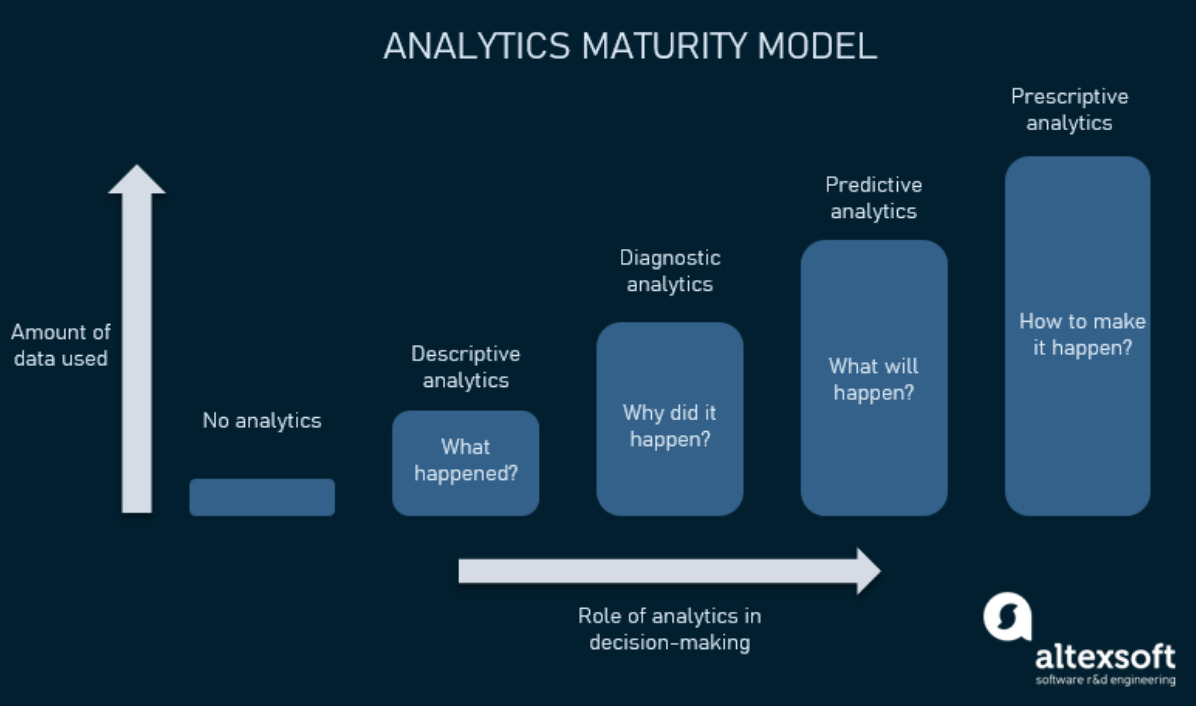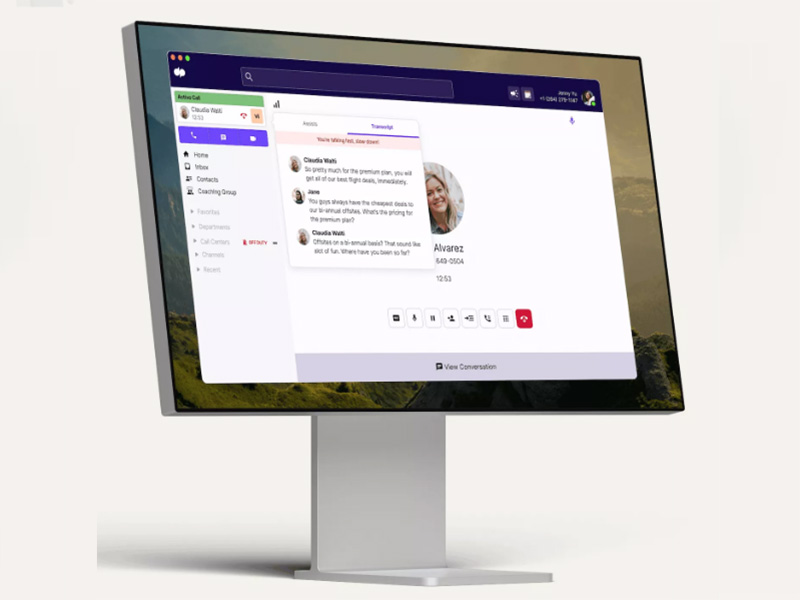By Grace Lau
In recent times, the technology used by contact centers has evolved in leaps and bounds. A lot has changed since landline – and telephone-based call centers – were the norm, thanks in large part to the growth of the internet and advances in the field of computing and automation.
These days, omnichannel contact centers employ an arsenal of the latest technologies. High-speed broadband, VoIP telephony, state-of-the-art software applications, and a range of automated contact center solutions help contact center agents work more efficiently and deliver a better experience for the people they’re in touch with.
What Is Contact Center Automation?
Contact center automation refers to the process of automating routine tasks in a contact center. Various automated contact center solutions exist that make use of different technologies for this process.
Of course, there are many different types of contact centers that inevitably deploy different automation solutions. There are business-to-business contact centers, sales-based contact centers, and contact centers focused on customer service, to name just a few. Every contact center has different needs and faces different challenges when it comes to automation.

Let’s briefly look at the first type of contact center mentioned above as an example – a business-to-business, or B2B contact center. Because B2B is such a broad category, there are lots of different communications strategies a B2B contact center might deploy.
A B2B SEO agency may well decide to focus its efforts on delivering high-quality webchat in order to make the most of its website traffic. In this case, they would want to prioritize automating their live chat set-up and webchat procedures, making these as efficient as possible.
As you can see, which communication channels a contact center makes use of will have a significant impact on the types of processes it can automate for maximum gain. But whether you deal mostly in voice calls, email, SMS messaging, or a diverse variety of channels, there are a few key technologies that pop up when it comes to automated contact center solutions.
Automated Contact Center Technologies
In the world of contact center automation, four technologies stand out for their ability to assist in automating various processes. The development of dedicated contact center software, artificial intelligence (AI), data analytics, which includes predictive and prescriptive analytics, and call recording have all had an impact on the way modern contact centers operate.
Contact Center Software
For both inbound and outbound contact centers, having the right software in place can make all the difference between an efficient, profitable contact center and an underperforming one.
Rather than contact agents having to switch between multiple software applications, the best contact center software applications, such as Dialpad, are built to be used as a single unified communications hub for all your communications needs.
Although there are plenty of Dialpad alternatives on the market, not all of them provide the same integrations and cross-channel data tools that make automating tasks possible. For example, Dialpad software can be programmed to transcribe all calls and automatically add those records to almost any customer relationship management (CRM) system.

Artificial Intelligence
Artificial intelligence (AI) allows computers to perform tasks usually carried out by humans. In 2022, we are increasingly living in an AI-based business world.
Machine learning and natural language processing are two categories of AI that have been applied to contact center automation.
For example, machine learning is behind a technology known as natural language processing (NLP), which powers today’s automatic speech recognition tools.
As you can probably imagine, the ability of a computer to recognize human speech is immensely useful for call centers. A type of call center artificial intelligence known as voice intelligence (VI) combines NLP with sentiment analysis (another AI technique) to transcribe calls in real-time, creates summaries of calls to be reviewed later, and even identifies specific words and phrases that can tell call center managers whether conversations are going well or not.
Predictive Analytics
Predictive analytics refers to a type of advanced data analytics that uses mathematical models and machine learning to forecast outcomes of events given known information.
A familiar example of predictive analytics is the way search engines, like Google, are able to offer search suggestions based on data from previous searches. For example, when you start typing .io into a search bar, and the search engine suggests io domain defined as a query, that’s an example of predictive analytics in use.
Prescriptive Analytics
Another key pillar of modern, data-driven business analysis, prescriptive analytics applies statistical theories to inform decision making and suggest optimal paths forward for companies. These days, business managers in a range of industries are turning to prescriptive analytics to help them navigate the vast seas of data that are available to them.
Prescriptive analytics has a variety of applications in contact centers. For example, prescriptive models are used by sales agents to help them know which customers are most likely to respond well to which offers and deals..
As with many automation technologies, prescriptive data science has to be applied strategically and without losing sight of the all-important human factor.

While a data-based approach can help you to chart the most profitable path, it can’t make all the decisions for you. When it comes to your company’s values, you will need to embrace social advocacy and take a clear stand on ethical issues, which can only be done in dialogue with staff and customers.
Call Recording
Call recording is another technology that used to require a complex set-up, requiring specialist equipment, like tape recorders, but can now be managed by your contact center software.
With a software solution like Dialpad, not only can you set the system up to record all calls automatically, but agents also have the option to switch recording on and off.
To ensure legal compliance, you can also set your phone system up to automatically play a customized disclosure notification before any call is recorded
Contact Center Processes That Can Be Automated
There are as many different models for automating contact center processes as there are contact centers. Which processes you choose to automate will depend on what your contact center does, what kind of technologies it uses, and what you wish to gain from automation.
Some automation techniques are best suited to inbound contact centers, some are ideal for outbound contact centers, and others are equally useful for both.
For Inbound Contact Centers
Routing calls to the best department needn’t be done by a human telephone operator in this day and age. Thanks to VoIP technology, enterprise phone systems with advanced features are now available to a greater number of organizations than ever before. Even small businesses that don’t require dedicated contact center services now have the option to design their own interactive voice response (IVR) menus, which allow callers to direct themselves using their keypads
Pulling up CRM data is essential for contact agents who are in conversations with customers. Thankfully, when your CRM system is integrated with your contact center software, this can be done automatically so that customer profiles and other key information are displayed to agents whenever a call connects.

For Outbound Contact Centers
Outreach refers to the process of reaching out to contacts. There are several reasons why people’s details end up on a contact list. They may have signed up to receive further information, or perhaps they are on a list of existing customers. Whatever the reason you are reaching out, why not save time by automatically sending an email or an SMS to your entire contact list? This can help gauge interest and generate leads without the need for human agents to manually call up the entire list.
Following up is a similar process to reaching out. It usually involves sending a follow-up message to contacts after a conversation has taken place. By automating the process, contact center agents can focus on the task of moving through contact lists without having to worry about personally sending a follow-up message, which is triggered to send automatically once certain criteria are met.
Preparing and managing contact lists can be one of the biggest challenges for contact centers. But many of the routine aspects of this task can be streamlined by using an automated contact center solution. Things like verifying numbers, removing invalid email addresses, and organizing lists according to a defined schema are all laborious and time-consuming if you have to do them yourself, but they’re easy to automate.
For Inbound-outbound Contact Center Processes
Transcribing conversations is an essential process for contact centers that want to implement a stringent quality assurance program. With the ability to read written versions of recorded conversations, managers have an easy way to review calls, helping them to build a feedback-driven culture in their team.

Automatic transcription gives contact centers access to a wealth of call data that would be nearly impossible to gather and analyze otherwise. This information can be applied to sales and CRM processes or used for training new agents.
Forecasting is a key part of contact center management that is equally important to both inbound and outbound operations. Automated forecasting takes much of the hard math out of predicting things like which times will be busiest and when centers may need to take on extra staff.
Scheduling is essential in contact centers if you want to avoid over-staffing or under-staffing. Workforce management software can be used to automatically design the optimal schedule that is most likely to ensure you have the right number of agents for an expected volume of communications.
Conclusion
With a data-based approach and effective software stack, contact centers can efficiently streamline their workflows by deploying automation solutions.
As the industry evolves, the techniques and technologies discussed here are becoming an indispensable aspect of contact center management.
About the Author

Grace Lau is the Director of Growth Content at Dialpad, a hosted PBX for small business and easier team collaboration. She has over 10 years of experience in content writing and strategy. Currently, she is responsible for leading branded and editorial content strategies, partnering with SEO and Ops teams to build and nurture content. She’s written for sites like GetGuru and Soundstripe.


































